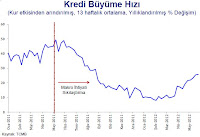The following is a short essay I wrote during the application process of Sabancı School of Management (Although I got an acceptance, I chose the Executive MBA program of Boğaziçi University):
A New Era
Needs New Kind Of Managers
With the new millenium,
the world entered a new era, moving from the last 250 years of the Industrial
Age to the Information Age, an era of rapid and radical change. A new world is
forming that bears little resemblance to that of past.
With in the Industrial
Age, the rate of change was relatively slow and predictable, and seldom
radical. The competitive environment was less intense and changed more slowly,
product life spans were much longer. Competitive advantage came more from
focusing resources on continuous improvement in quality, operational
effectiveness and efficiency. Corporates used the “new” manufacturing methods
to produce more, better and cheaper products (as it is humorously pictured in
Charlie Chaplin’s “Modern Times”). The catchword of yesterday is “Doing things
better”.
With the Information
Age, the rules changed radically. People are now a part of a network society, operate in an
information economy, live in a global village and trade in a borderless world. Our
world has become mobile, connected, interactive, immediate and fluid. Corporations
still need continuos improvement in quality, operational effectiveness and
efficieny, but the customers of this era expects immediate gratification, a
greater choice of “fresh” products which results in a new dimension that
corporations have to focus; “continuous corporate innovation”. The catchword of
today is “Doing new things well”.
This is a turning point
where the corporations confronted with new great challanges, but also offered
“limitless” opportunities. This is a turning point as concepts of innovation,
agility, optimisation and risk are defined as the four critical success
requirements. This is a turning point where the corporations need to be agile
and flexible, provide superior service, give quick responses, operate in niche
markets, maintain closer customer relationships, create alliances, develop
cross-cultural networks and maintain a diversity of contracts.
Turkey, as a close contributor
of global world, experiencing this radical transition and transformation too.
In the history of
Turkish business world, it can be seen that the state has an active,
interventionist role from the first day of its foundation. This makes Turkish
corporations to mainly focus on the business activities maintained by the
state. This results as the core competence of corporations to gain “good”
relations with the state to grow in a “protected” market. During this period, a
common pattern of management practices is developed which has characteristics
as centralised control, paternalism, short-termism and lack of delegation and
autonomy. An interesting observation is that even the “protective” barriers of
the market is removed with the 90s and new generations of managers are
appointed for the period of last 15 years, this new generations tend to follow
and internalize these values. In several studies, Turkey is characterized with
low autonomy, low empowerment and low performance-reward contingency. A special
case for Turkey is that family companies cover a substantial portion of the
local private sector which show a great value of conservatism as a management
behaviour.
However, in the Information
Age, the shift toward creating and sustaining competitive advantage is largely
based on capabilities rooted in innovativeness and change. Cutting costs and
remaining efficient will still be necessary for corporate survival, but they
won’t be enough. This shift to meet the new challanges of the new era, requires
different sets of managerial values and approaches. Only with these attributes as
committing profitability and customer satisfaction instead of endorsements and
big balance-sheet values, managing without strict control, being a starter not
a follower, promoting capabilities, speed and openess in decision making,
building business partnerships without discrimination, free thinking,
highlighting ethics can a corporation make necessary metamorphosis. Combining
these terms will result in definition of “Professional Management”.
Professional management
was born during 1841 at the United States after an accident, in which two
trains collided. This accident showed the world that the owners of the railway
company is not capable of managing the modern enterprise, there is a need of a
new group of people who managed to act as business managers.
The current situation of
Turkish business world bears a resemblance to that unfortunate train accident; local
corparates powered with traditional, historic management model is going to be
up against to corporates of global world powered with professional management,
in a rapidly accelerated speed. Most Turkish large enterprises envisaged this
for some time and made necessary metamorphosis actions like the magnificient
transformation program Mr. Akın Öngör achieved at Garanti Bankası, but for most
of the small and medium sized enterprises it is not possible to see any clear signs
of awareness of the global change in the business world. And unfortunately for
these unaware compaines, the result of a such collusion is already
predetermined as vanishing from the future business environment. As Mr. Jan
Nahum mentions in his talks about innovation and new management trends; “You
can reach numbers as up to 50 billion dollars of annual import rates with
current, traditional behaviour in Turkey’s automotive industry but after that a
fall down is unavoidable. To go beyond that barrier, to move to a next level, you
have to change how you perceive, how you think, how you act and how you manage”.
In this completely new economical,
social and political environment, it is not likely that corporations can use
yesterday’s strategies to solve today’s problems and expect to be in business
tomorrow. To make the companies to shift towards these new paradigms, an
important role is given to “professional” managers. This does not mean
“professional management” is the only key factor effecting the success of this process;
but without its wisdom, it is not possible to create learning, creative
corporate organisations that has ability to easily adapt the new business
environment; the corporate organisations of the future.









